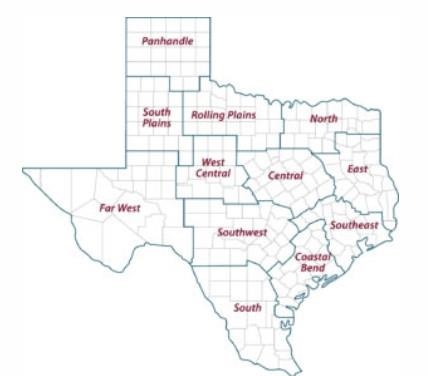Hacienda San José, a cattle ranch situated in the department of Vichada in Colombia, has set out to produce the most sustainable beef in tropical environments. Co-founders, Paulo Moreira and Gabriel Jaramillo – both former bankers – have made it their mission to create the ‘perfect beef’, taking into account animal welfare, pollution emissions, resource consumption, and the ability to use resources efficiently.
To achieve their vision, partnerships have played a critical role for Hacienda San José. They collaborate with universities, research centers, environmental organizations, and multilateral banking funds to improve their practices continuously. The ranch uses Nelore short cycle breed cattle and African pasture called Brachiaria developed by the Alliance of Bioversity-CIAT (the Alliance). They also take advantage of their remote location to emit fewer gases and capture more carbon than they emit. Although the meat produced is not for the Colombian market, it’s exported to the United States and Europe, where consumers demand sustainability from their beef producers.
Initially, Hacienda San Jose began its project with 8,800 hectares and approximately 5,500 cattle. With funding received from environmental and impact investor &Green, they are expanding their ranch to 180,000 hectares through an associative model. Obtaining sustainable financing from sources like &Green is a novel approach for many private enterprises that want to adopt sustainable practices while remaining productive. Hacienda San Jose aims to become an example of how this can be done.
We interviewed co-founder Gabriel Jaramillo to uncover how partnerships with the Alliance, under CGIAR’s Research Initiative on Livestock and Climate, and &Green are driving the realization of their vision for a sustainable and eco-friendly cattle ranching industry in Colombia and beyond.

You can catch Jaramillo at the Global Landscapes Forum Finance in Luxembourg on 7th March 2023 at an event supported by the CGIAR Research Initiatives on Climate Security and Livestock and Climate, where he will be talking about his ranch’s innovative approach to attract further investment for scaling.
What attracted Hacienda San Jose to embark on a partnership with Alliance of Bioversity-CIAT and how has that contributed to helping the ranch meet its sustainability goals?
We knew that to achieve our holistic sustainability goals, we needed multiple partners from different areas. The Alliance of Bioversity-CIAT is a world-renowned research organization, especially in the area of tropical pastures and lake areas in Colombia. Our partnership has been successful because we share similar values and a common purpose to improve the practices in tropical beef production.What really caught our attention was the Alliance’s work on brachiaria grass, which is a forage grass that is suitable for the type of soils we have on the ranch. This grass can improve soil quality in an economically and environmentally sustainable way. Because we are a science-based project, this has made our communication with the research teams more fluid and effective. Through this partnership we have robust data that has been integral to our scaling success.
What motivated Hacienda San Jose to apply for funding from &Green?
When we started our sustainability journey, we knew that finding the right partners would be crucial in validating our model. So when we heard about &Green we saw an opportunity to not only receive funding but also gain recognition for our sustainable practices. And that’s exactly what happened – the loan we received from &Green is as a validation of our hard work and efforts towards holistic sustainable cattle ranching. We are able to benefit from a long loan grace period of 10 to 12 years, which is not common in traditional commercial banking. Although the loan cost is not cheap and complying with all the requirements can be cumbersome and at times expensive, we find &Green to be an understanding institution. They take into account the context of our specific project and the environment where it takes place.
How have the partnerships with the Alliance of Bioversity-CIAT and &Green contributed to Hacienda San Jose’s vision and success?
We met the Alliance and &Green through the World Bank and pursued both partnerships in parallel. Colombia wasn’t initially on &Green’s priority list for investments in tropical beef production or cattle, but through our engagement with them, we were able to show how our sector could make a positive impact on climate change. Our work with the Alliance also gave &Green confidence in us, while the Alliance gained confidence as they saw our progress with &Green. The two partnerships in effect became validators of our commitment to sustainable cattle ranching at Hacienda San Jose. It’s been exciting to partner with two institutions that are working to promote sustainable practices in the industry.
Can you point us to some lessons you learned about the financing process?
We were proud to be one of the first two investments in cattle ranching and beef operations for &Green. It took a while for them to get to know us, but having reputable certifications like the Rainforest Alliance definitely helped boost their confidence in us. Initially, the financing process felt bureaucratic, but we’ve seen improvements as &Green has become more familiar with our area of expertise. For anyone considering climate change impact financing, I can say it’s definitely worth it. It helps promote a culture of sustainable livestock production, which is something we’re passionate about.
In your opinion, why has it been important for &Green to finance an enterprise like Hacienda San Jose?
Through our engagement process with them, &Green has seen the great potential in coming to a remote area like ours in Colombia, where replicable models could be developed and funded. They prioritize projects that can be replicated, and our state alone has 11 million hectares, making it an interesting prospect for both us and &Green. We’re grateful for the opportunity to showcase our work as a replicable example that can help promote sustainable practices in the industry.
Click here to see more...